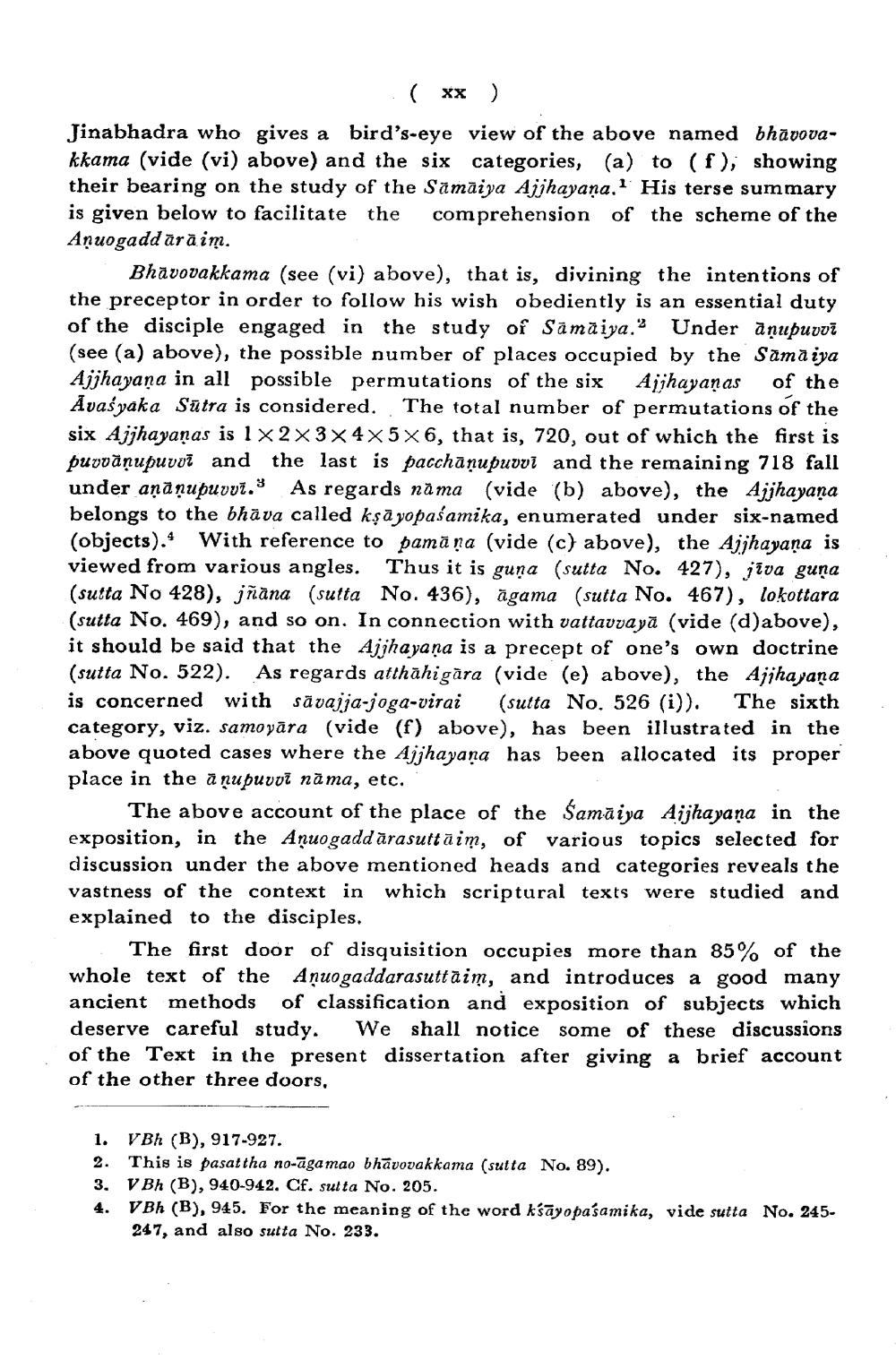________________
(xx)
Jinabhadra who gives a bird's-eye view of the above named bhavovakkama (vide (vi) above) and the six categories, (a) to (f), showing their bearing on the study of the Samaiya Ajjhayana. His terse summary is given below to facilitate the comprehension of the scheme of the Anuogadd ar aim.
3
Bhavovakkama (see (vi) above), that is, divining the intentions of the preceptor in order to follow his wish obediently is an essential duty of the disciple engaged in the study of Samaiya." Under anupuvvi (see (a) above), the possible number of places occupied by the Samaiya Ajjhayana in all possible permutations of the six Ajjhayanas of the Avasyaka Sutra is considered. The total number of permutations of the six Ajjhayanas is 1×2×3×4x5×6, that is, 720, out of which the first is puvvāṇupuvor and the last is pacchāņupuvvi and the remaining 718 fall under aṇāṇupuvvi. As regards nama (vide (b) above), the Ajjhayana belongs to the bhāva called kṣāyopaśamika, enumerated under six-named (objects). With reference to pamana (vide (c) above), the Ajjhayana is viewed from various angles. Thus it is guna (sutta No. 427), jiva guna (sutta No 428), jñana (sutta No. 436), agama (sutta No. 467), lokottara (sutta No. 469), and so on. In connection with vattavvaya (vide (d)above), it should be said that the Ajjhayana is a precept of one's own doctrine (sutta No. 522). As regards atthahigara (vide (e) above), the Ajjhayana is concerned with savajja-joga-virai (sutta No. 526 (i)). The sixth category, viz. samoyāra (vide (f) above), has been illustrated in the above quoted cases where the Ajjhayana has been allocated its proper place in the anupuvvi nama, etc.
The above account of the place of the Samaiya Ajjhayana in the exposition, in the Anuogaddarasuttaim, of various topics selected for discussion under the above mentioned heads and categories reveals the vastness of the context in which scriptural texts were studied and explained to the disciples.
The first door of disquisition occupies more than 85% of the whole text of the Anuogaddarasuttaim, and introduces a good many ancient methods of classification and exposition of subjects which deserve careful study. We shall notice some of these discussions of the Text in the present dissertation after giving a brief account of the other three doors,
1.
VBh (B), 917-927.
2. This is pasattha no-agamao bhavovakkama (sutta No. 89).
3. VBh (B), 940-942. Cf. sutta No. 205.
4.
VBh (B), 945. For the meaning of the word ksayopasamika, vide sutta No. 245247, and also sutta No. 233.




